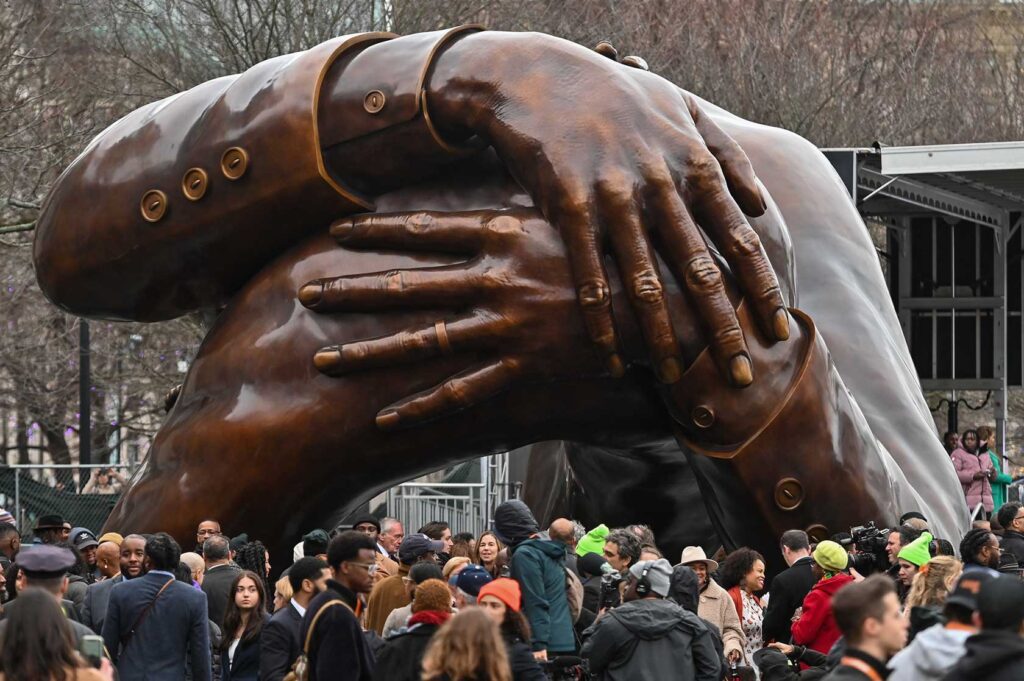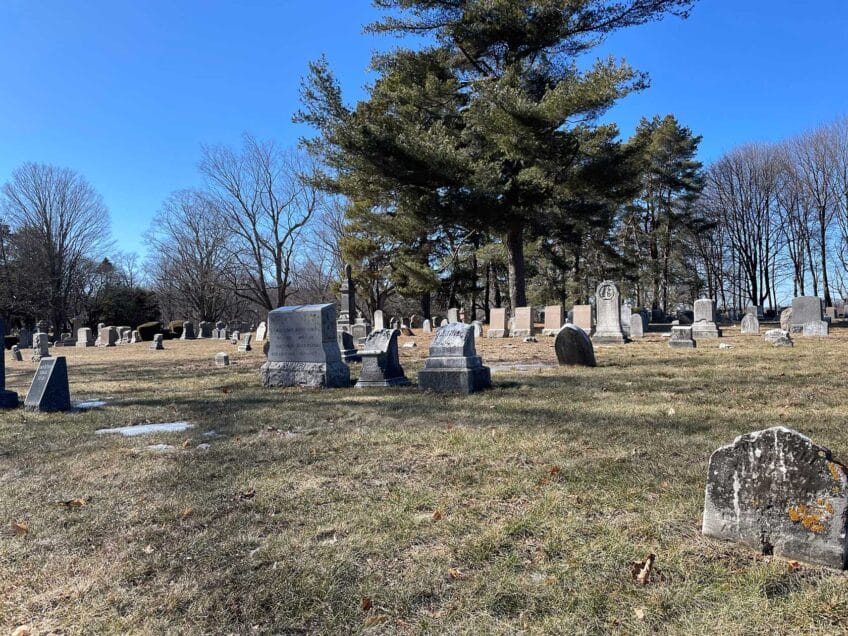Remembering MLK: ‘The Embrace’ sculpture marks a milestone
It’s been one year since its unveiling on Boston Common

This weekend marks the first anniversary of the unveiling of the sculpture “The Embrace,” by artist Hank Willis Thomas and MASS Design Group.
The anniversary comes as the nation prepares to pay tribute to Martin Luther King Jr. on the Jan. 15 national holiday. It also comes amid racial and political divisions in the country and calls for greater unity.
“It’s not lost on us that we’re celebrating the King holiday in this time when people are saying that DEI and antiracism are disappearing,” said Imari Paris Jeffries, executive director of Embrace Boston, the group that was instrumental in the monument’s creation.
Situated in a new public gathering space on Boston Common called the 1965 Freedom Plaza, the memorial honors the life and legacy of the Rev. Dr. Martin Luther King Jr. and Coretta Scott King and their presence in the city.
The couple met when he was a doctoral candidate at Boston University and she was a student at the New England Conservatory of Music. They began their married life together in Boston.
King returned to the city as a civil rights leader, most notably on April 23, 1965, when he led a march from Carter Playground in Lower Roxbury to the State House and delivered an address to an estimated 22,000 people on the Common.
“The Embrace” — a 22-foot-tall, 25-foot-wide, 38,000-pound bronze sculpture depicting huge arms locked in a hug — was inspired by a famous photograph taken of the Kings hugging after he won the Nobel Peace Prize in 1964. It is intended to give shape and prominence to King’s conception of agape love. Surrounding the monument, the names of 69 distinguished local leaders, from Jean McGuire to Melnea Cass, are emblazoned in stone on the 1965 Freedom Plaza. The project cost about $10 million to create and maintain.
The Kings’ memorial was the idea of entrepreneur Paul English, who saw a memorial to King in San Francisco and thought Boston should have one of its own. In 2017, he contributed the initial $1 million to establish a fund at the Boston Foundation. The memorial is the result of a public-private partnership initiated by English between the city of Boston and Embrace Boston, which exists under the umbrella of the Boston Foundation.
“We are a racial equity organization that uses art and culture,” said Jeffries.
The city and Embrace Boston set up an art committee co-chaired by Barry Gaither, director and curator of the Museum of the National Center of Afro-American Artists, and Karin Goodfellow, the city’s director of public art.
On March 4, 2019, Willis Thomas and MASS Design Group’s proposal for “The Embrace” was officially selected from 126 submissions. The final design was approved in spring of 2021, and the unveiling of the sculpture on Jan. 13, 2023 attracted many public figures, including the Kings’ eldest son, Martin Luther King III, actress Alfre Woodard, Congresswoman Ayanna Pressley, Gov. Maura Healey and Mayor Michelle Wu.
The new memorial was not without its critics. For example, Washington Post columnist Karen Attiah said the sculpture’s form and lack of faces make it appear “deracialized” and a “whitewashed symbol” that distorts what King stood for.
Responding to the critics, Jeffries said, “‘The Embrace’ is probably the most visited monument in the city.”
He added, “They didn’t like the Eiffel Tower when it was first erected. The Statue of Liberty wasn’t necessarily received with open arms. There’s an initial backlash when monuments are built, but they become part of the fixture and fabric of the city. ‘The Embrace’ is a monument for Boston. Not only does it represent the legacy of the King family, but also 69 other distinguished Bostonians.”
The memorial is just the beginning. Embrace Boston has plans for a 31,000-square-foot art and culture center in Roxbury, and at least $31 million has been committed to it.
“We are still on track to hopefully open our doors by the end of 2027 or the beginning of 2028. Parcel 3 is still the intended location,” said Jeffries. “We’re part of that team that won the bid to build in the last urban renewal spot in the city — that parcel across the street from the police station on Tremont Street. We’re still slated to do that.”
Reflecting on the memorial and his group’s purpose, Jeffries said, “We are an organization that was created and really developed after the murder of George Floyd, and so there’s still a lot of work to do in the city and we’re proud and excited to continue in that light.”






